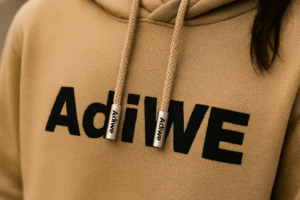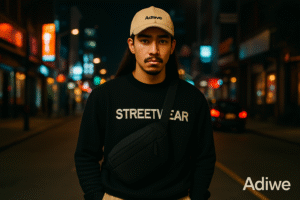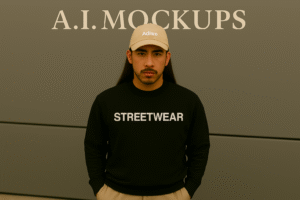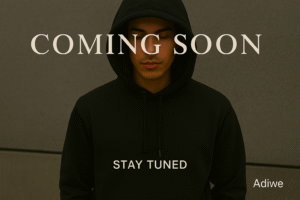Dreaming of your own clothing line but stuck on how to start? Launching feels complex, leading to inaction. Let's break down the steps to make your brand real.
Create your brand by defining your niche and style, designing products (use tech packs!), finding a quality manufacturer like us, getting samples, placing orders, and building your brand identity.
Building a successful brand takes more than just a good idea. It requires careful planning and execution. Let's dive into the first steps.
How do you start your own label of clothing?
Want your own clothing label but don't know where to begin? The path seems overwhelming, stopping you before you start. Get the clear first steps needed.
Start by identifying your target audience and unique style. Develop designs (tech packs are crucial!). Find a reliable manufacturer, get samples made, plan your budget, and create your brand story.
!
Starting your own label is an exciting journey! I've seen many brands, like my client Fifty Fifty, go from an idea to a successful reality. It begins with passion, but needs structure. First, know your customer. Who are you selling to? What's their style? What gap in the market can you fill? This defines your brand's niche. Next, develop your brand identity: name, logo, and overall feel. Then comes design. Create detailed designs, ideally in a Tech Pack format. This is critical for manufacturers like us at Adiwe to understand exactly what you want. After design, you need to find the right manufacturer. Look for factories specializing in your product type (like streetwear for us) and quality level. Request samples to check quality and fit before committing to a full order. Plan your finances – budget for design, samples, production (Minimum Order Quantities - MOQs), branding, marketing, and logistics. Finally, think about sales and marketing – how will you reach your customers? Online store? Social media? It's a step-by-step process, but getting these foundations right is key.
| Step | Key Action | Why It's Important |
|---|---|---|
| 1. Niche & Audience | Define who you're selling to & your style. | Guides design, branding, and marketing. |
| 2. Brand Identity | Create name, logo, visual feel. | Makes your brand recognizable and relatable. |
| 3. Design & Tech Pack | Develop detailed product designs. | Ensures accurate manufacturing and quoting. |
| 4. Find Manufacturer | Research and connect with suitable factories. | Crucial for product quality and reliability. |
| 5. Sampling | Get prototypes made and approve them. | Verifies quality, fit, and design execution. |
| 6. Budget & Plan | Calculate costs and plan logistics. | Ensures financial viability and smooth operation. |
| 7. Production | Place your bulk order. | Brings your product line to life. |
| 8. Marketing & Sales | Decide how to sell and promote. | Connects your brand with customers. |
What are the 4 types of private labels?
Heard about private labels but confused by the different types? Choosing the wrong model can limit your brand's potential. Understand the options clearly.
Common types include: 1) Generics with your label, 2) Modified existing designs, 3) Fully custom designs (like we offer), 4) Licensed brands (using another established name/character).
!
Understanding the different approaches to private labeling helps you decide what's best for your brand's vision and resources. Let's break down these common types in the clothing world:
1. Generic (White Label) with Your Branding
This is the simplest form. You choose existing, unbranded "stock" garments (like basic t-shirts or hoodies) from a supplier and simply add your brand label and tags.
- Pros: Fastest, lowest cost, minimal design effort. Good for basic items or testing the market.
- Cons: Little differentiation, products aren't unique, quality might be standard, not premium.
2. Modified Existing Designs
Here, you start with a manufacturer's existing style but request specific changes – maybe a different fabric, unique color, added pocket, or specific print technique.
- Pros: Faster than full custom, lower development cost, some uniqueness.
- Cons: Still based on existing templates, limited design freedom.
3. Fully Custom Designs
This is where you provide completely original designs (using detailed tech packs). The manufacturer, like Adiwe, creates the patterns and produces garments exactly to your specifications – fabric, fit, construction, details. This is what brands like Fifty Fifty need for their unique, complex streetwear.
- Pros: Complete design control, unique products, builds strong brand identity, potential for premium quality.
- Cons: Higher development cost, longer lead times, requires clear tech packs and good communication.
4. Licensed Brands
This involves paying a fee to use an established brand name, character, or artwork (e.g., Disney characters on t-shirts) on products you produce or source.
- Pros: Leverages existing brand recognition and fanbase.
- Cons: Licensing fees, strict usage guidelines, less about building your own brand identity.
At Adiwe, we specialize in fully custom designs, helping brands create truly unique, high-quality streetwear from scratch.What is the minimum budget to start a clothing brand?
Worried you don't have enough money to start? Budget uncertainty prevents many great ideas from launching. Understand the real costs involved.
There's no single minimum, but budget for design, tech packs, samples (~$50-$300+ each), MOQ production (often $2000+), branding, website, and marketing. Realistically, $5,000-$10,000+ is often needed.
!
Estimating a startup budget is tough because it depends heavily on your product complexity, quality, order quantity, and manufacturer choice. Saying "minimum" is hard, but let's look at the essential cost areas. You need to account for: - Design & Tech Packs: Can you do this yourself, or do you need to hire someone? (Could be $0 to $1000+)
- Sampling: Each sample costs money (materials, labor, shipping). Expect $50-$300+ per sample depending on complexity. You'll likely need a few rounds.
- Bulk Production (MOQ): This is often the biggest cost. Factories have Minimum Order Quantities (MOQs), maybe 50-300 pieces per style/color. If a hoodie costs $20 to make and the MOQ is 100, that's $2000 just for one style. Complex designs like Fifty Fifty's require skilled labor and quality materials, impacting unit cost.
- Branding: Labels, hang tags, packaging ($100-$500+).
- Website/E-commerce: Platform fees, design ($0 DIY to $5000+).
- Marketing & Photos: Lifestyle shots, ads ($500-$5000+).
- Logistics: Shipping from factory, import duties/taxes (Varies greatly).
- Contingency: Always budget extra for unexpected costs (10-20%).
| Cost Component | Estimated Range (Example) | Key Factors Influencing Cost |
|---|---|---|
| Design/Tech Pack | $0 - $1,000+ | DIY vs. Hiring a Designer |
| Samples (per piece) | $50 - $300+ | Complexity, Fabric, Revisions |
| MOQ Production | $2,000 - $10,000+ | Unit Cost x MOQ, Number of Styles/Colors |
| Branding (Labels etc.) | $100 - $500+ | Quality, Quantity |
| Website/Platform | $0 - $5,000+ | DIY vs. Professional, Platform Choice |
| Marketing/Photos | $500 - $5,000+ | Scope, Channels Used |
| Shipping & Duties | Highly Variable | Weight, Volume, Origin, Destination |
Starting lean is possible with simple products and low MOQs, maybe under $5,000. But for a brand with custom designs and decent inventory, budgeting $10,000 or more provides a safer starting point. Working with an efficient factory like Adiwe helps optimize production costs.
Conclusion
Creating your private label involves defining your brand, designing well, finding the right manufacturing partner, budgeting carefully, and understanding production realities. It's achievable with planning.




